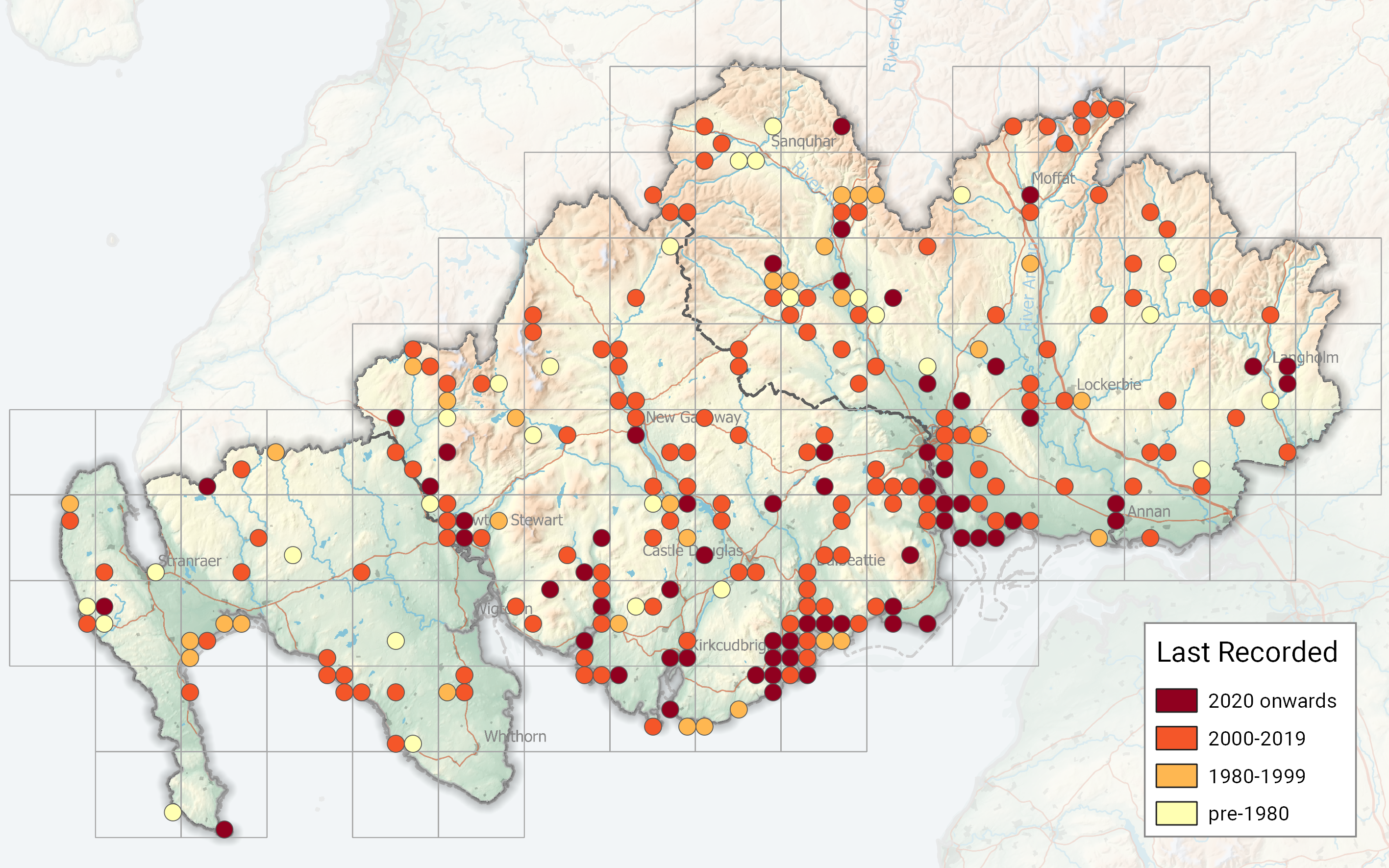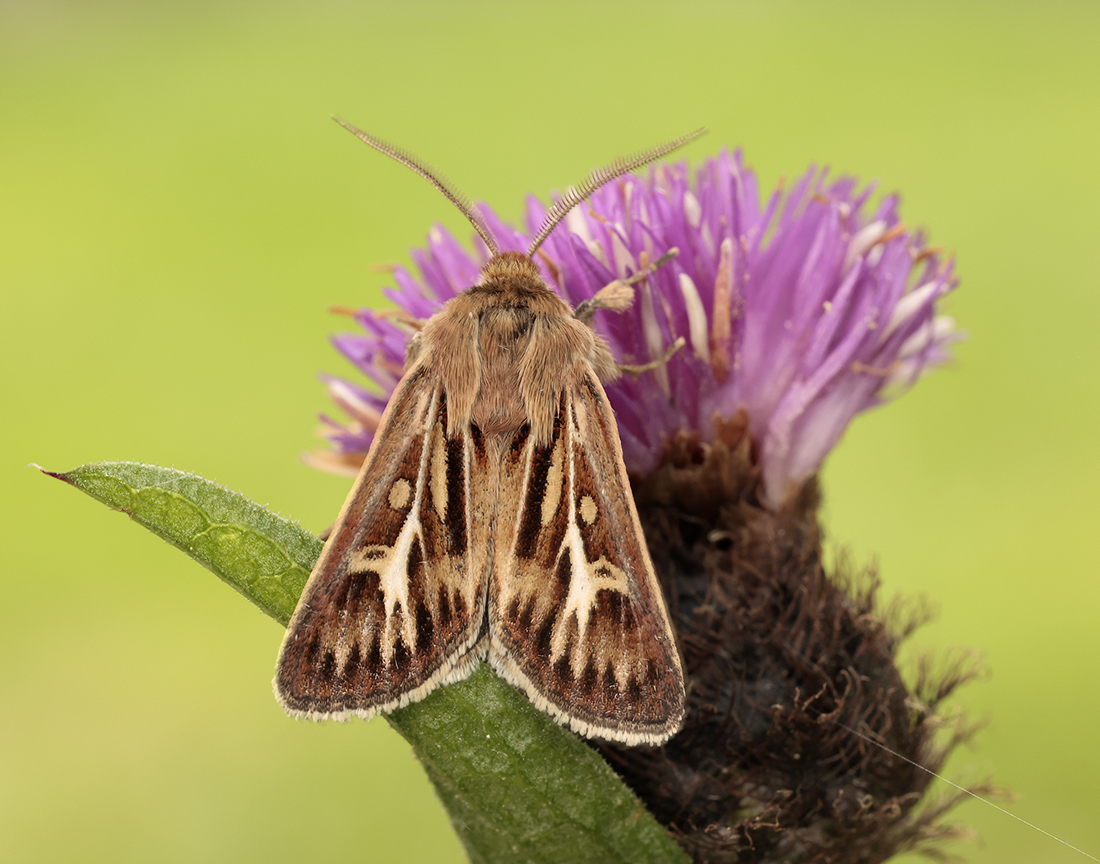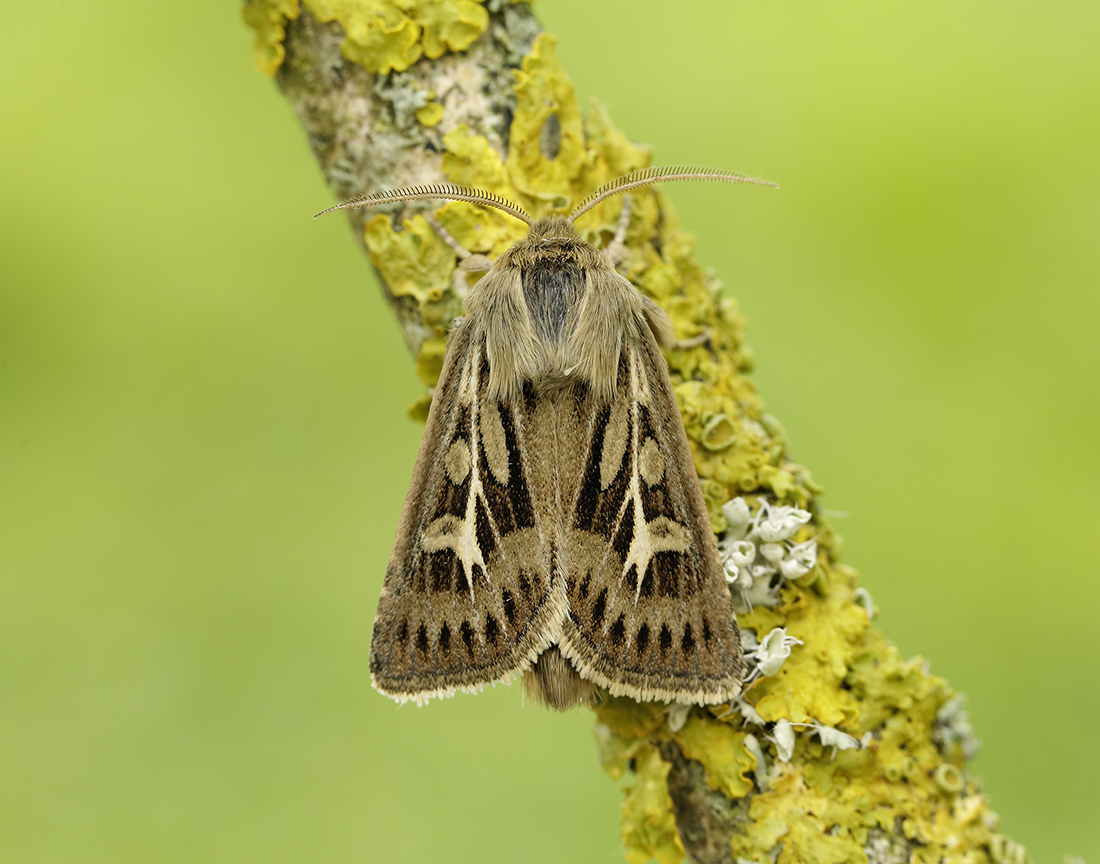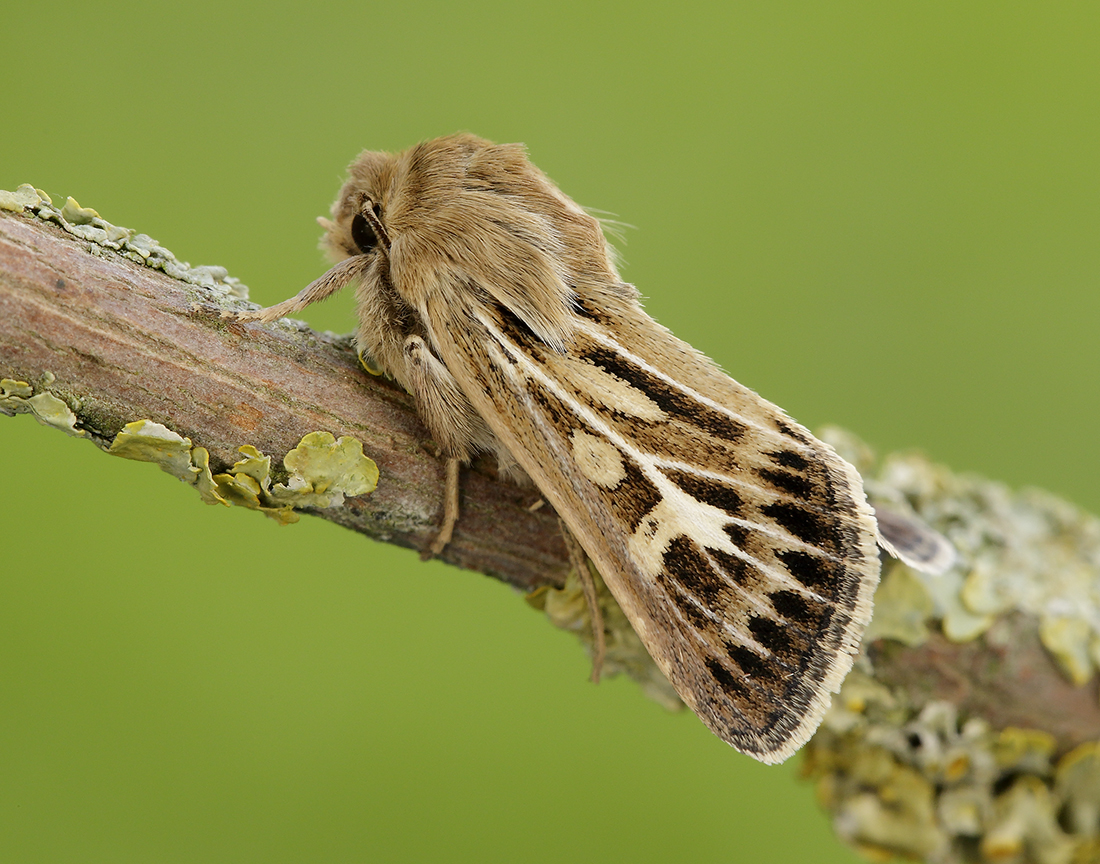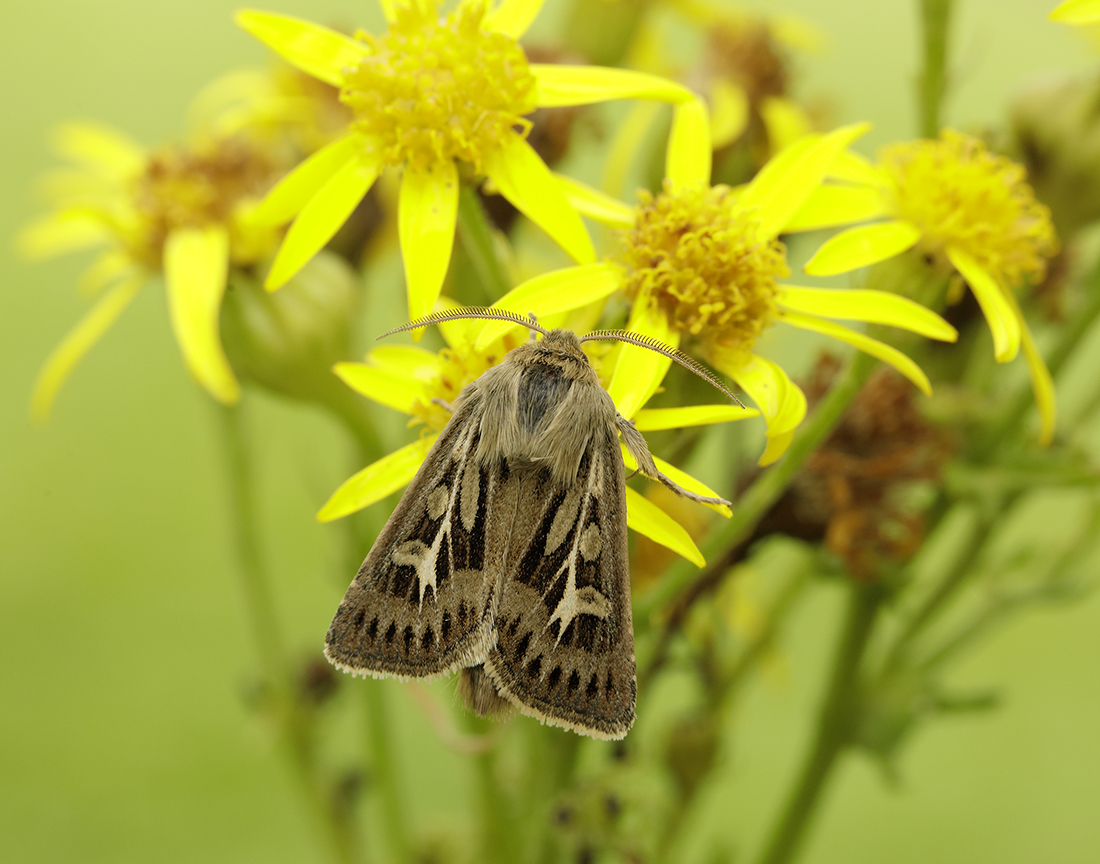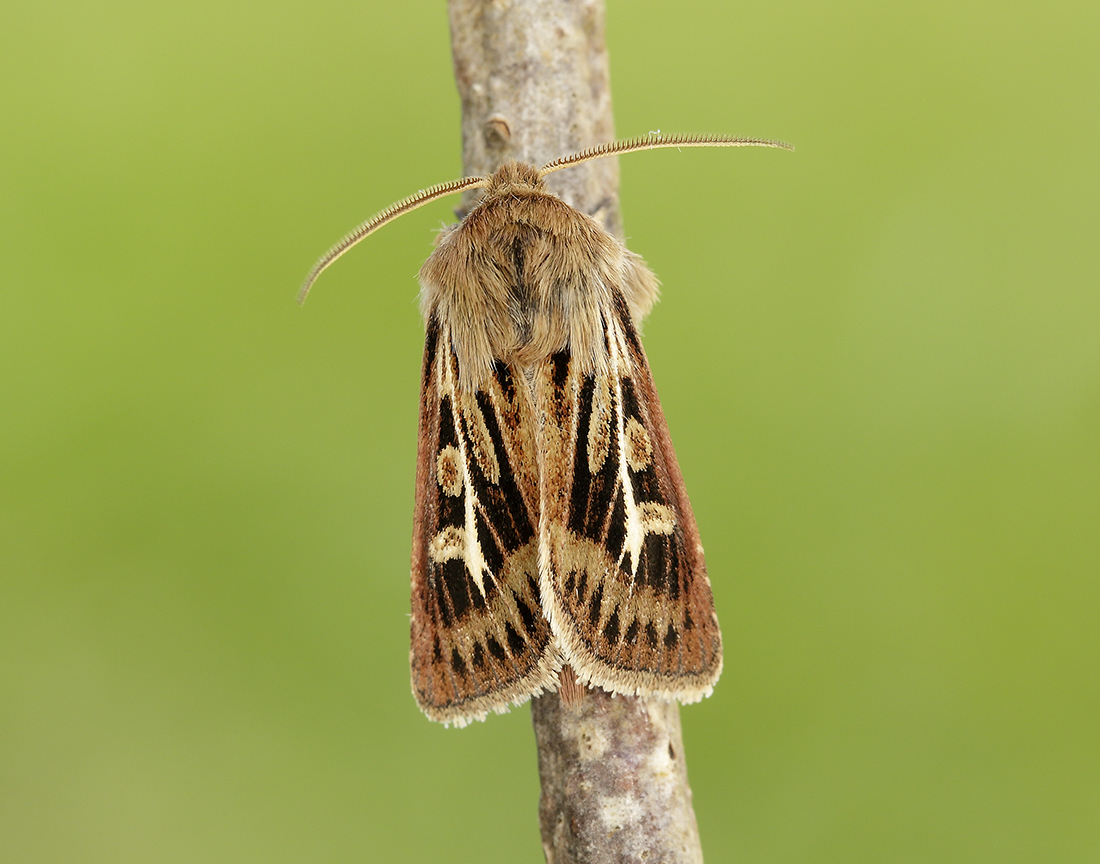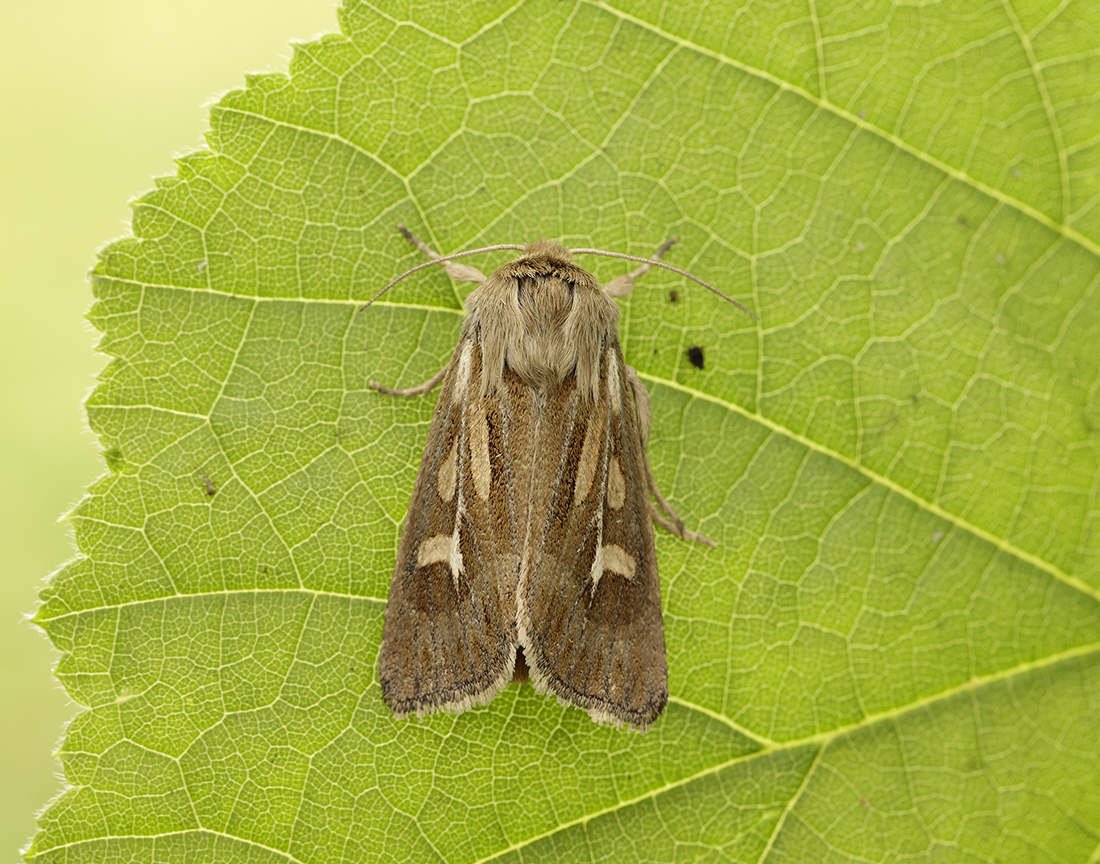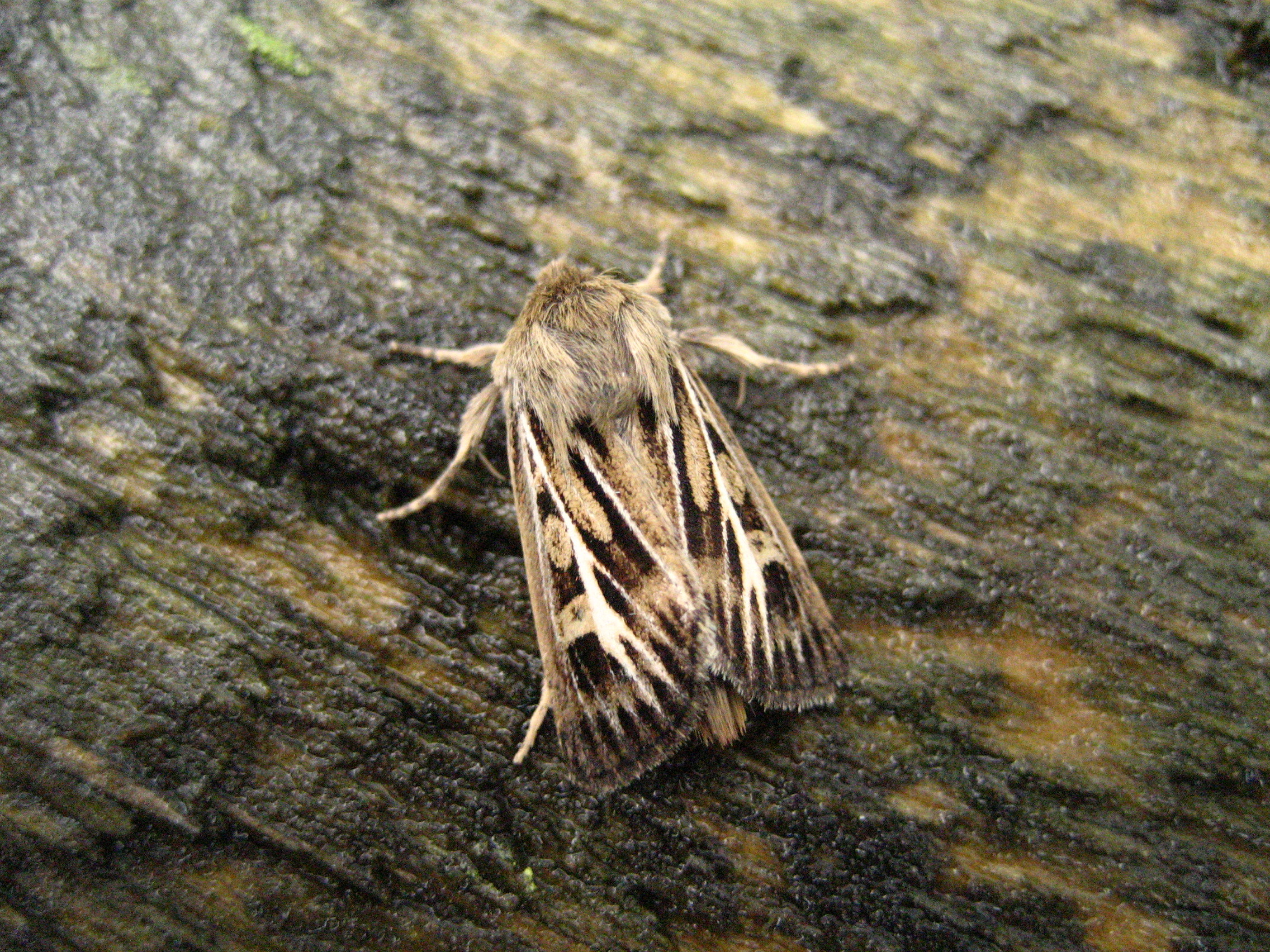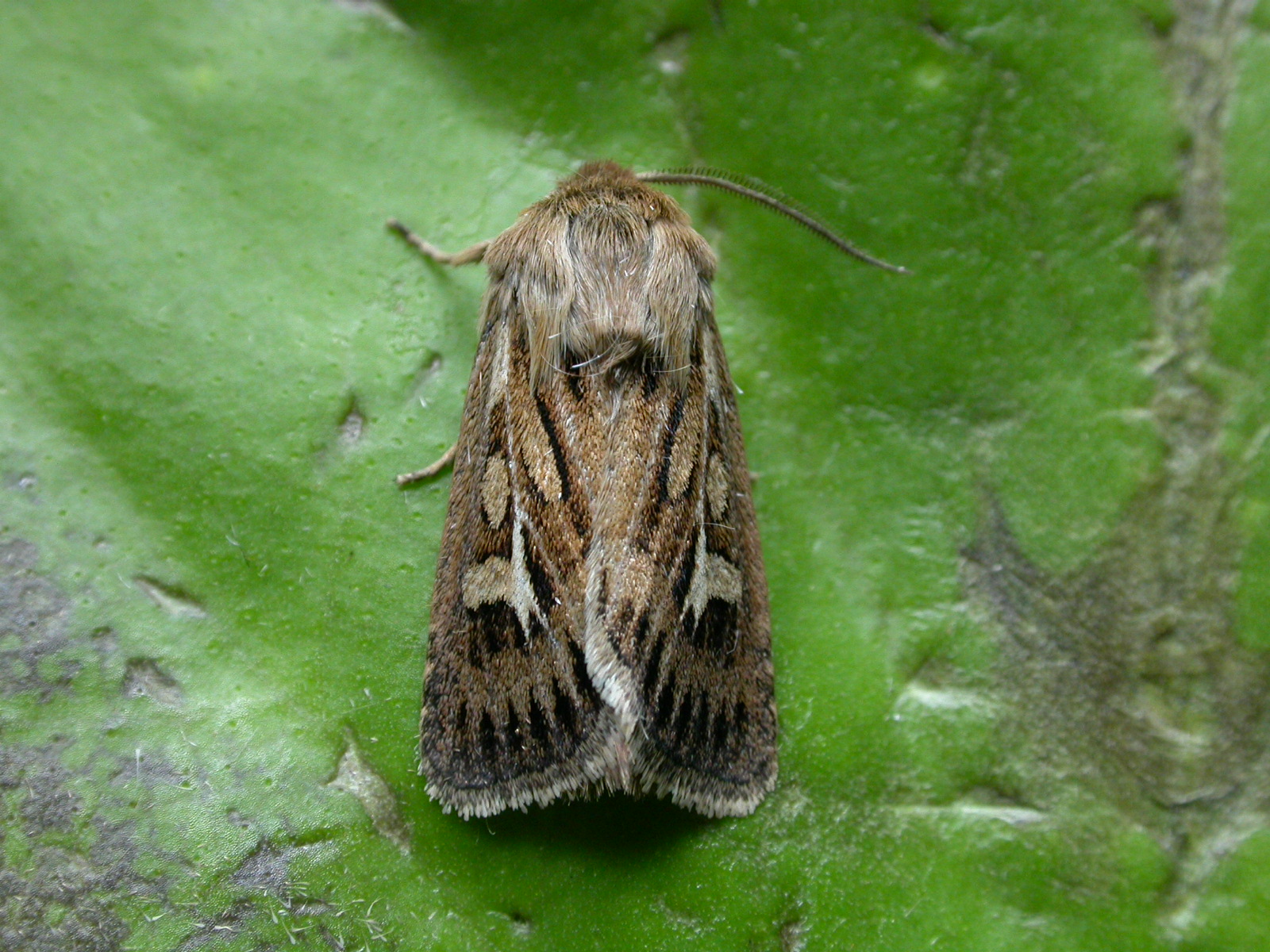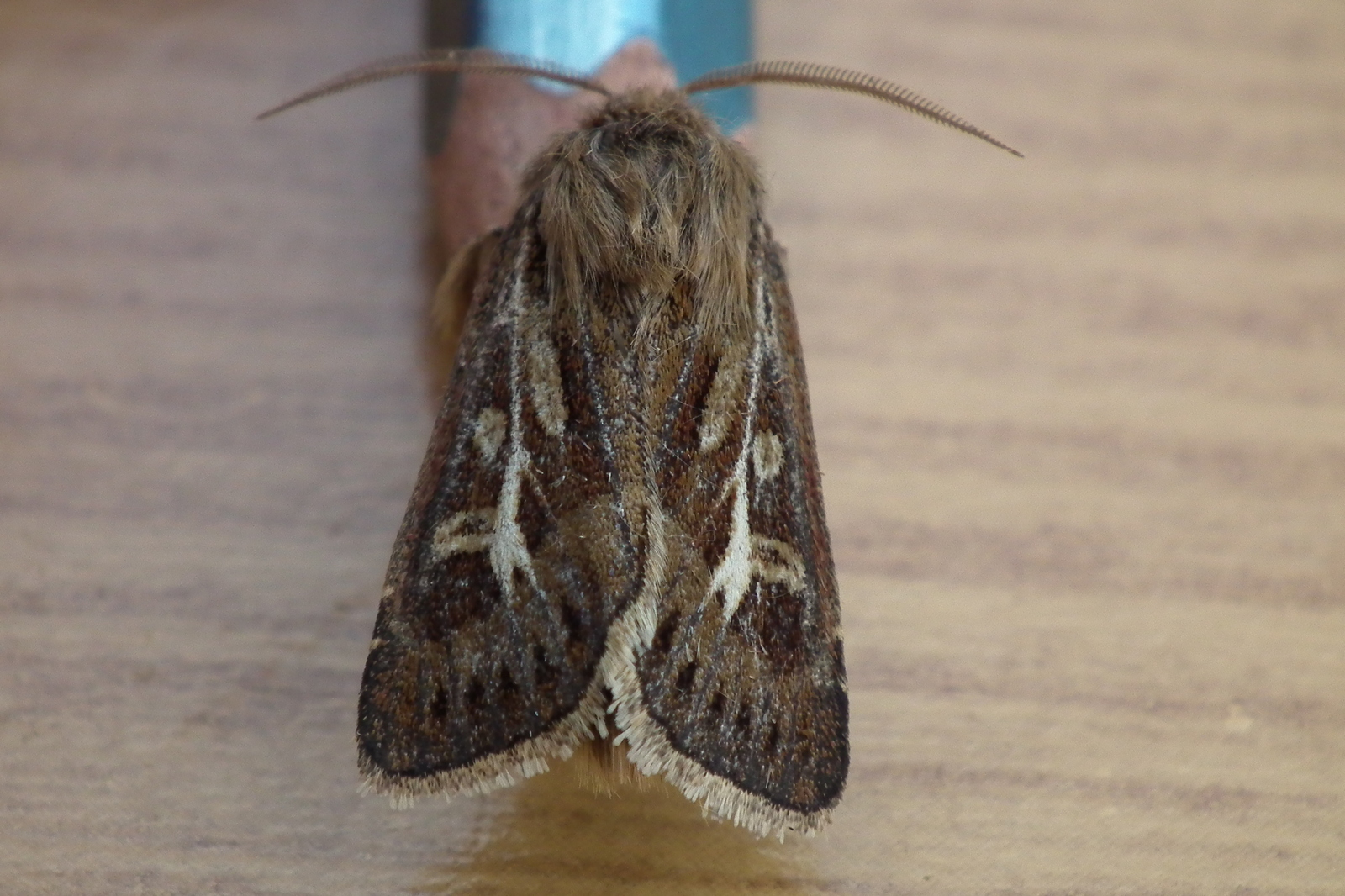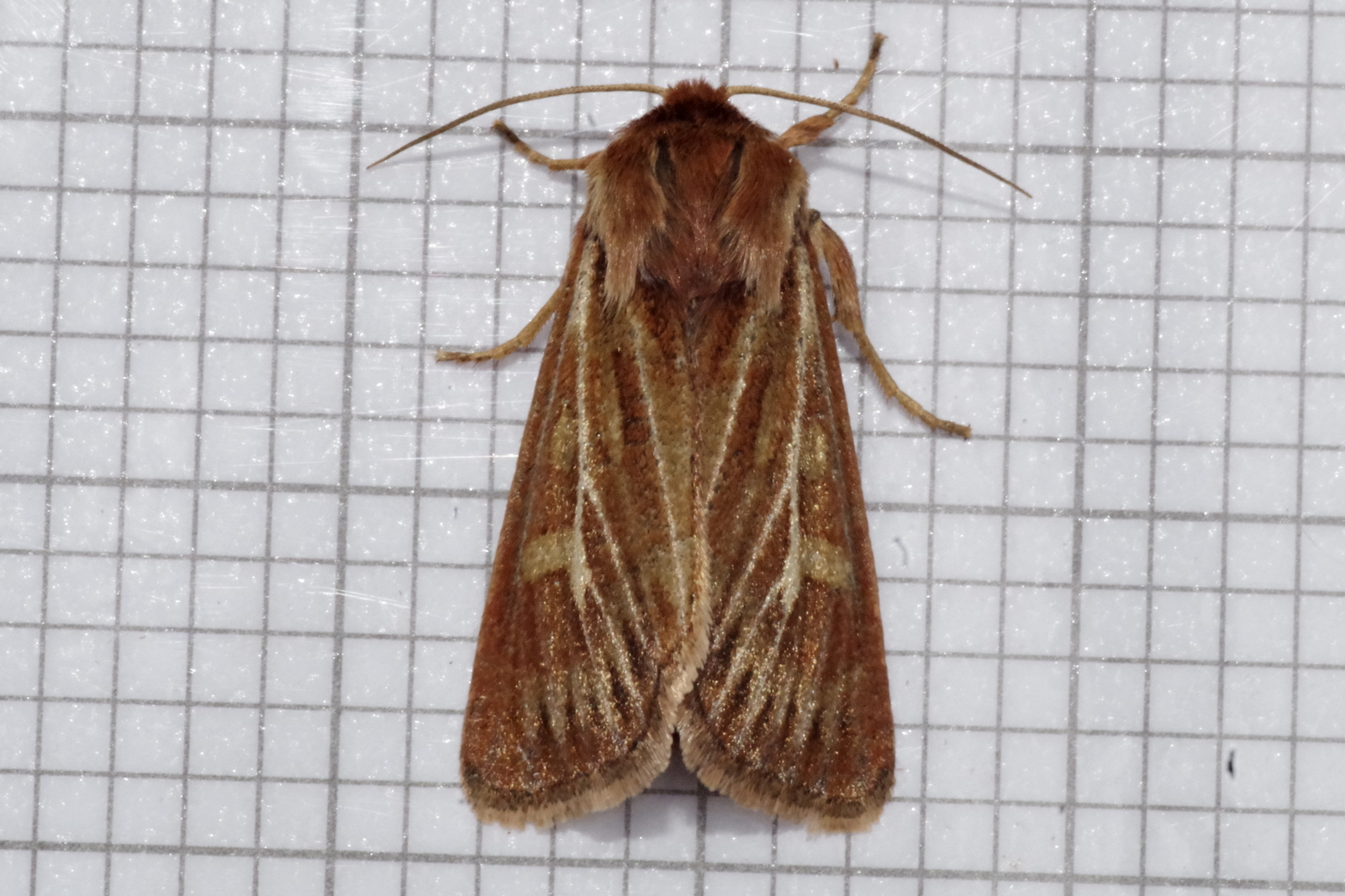Identification
Very distinctive with the creamy white antler-like mark on the forewing.
Recording Method.
Attracted to light, also comes to sugar and flowers.
Life cycle
One generation. Overwinters as an egg which is laid during flight over grassland. Larva March to June, feeding at night.
Larval foodplants
Larvae feed on Purple Moor-grass, Sheep’s Fescue and other grasses, sedges and rushes.
Habitat
Grassland and moorland.
History
Robert Service (1894) wrote in The Entomologist and is quoted here verbatim that sometime between 1830-36 the following occurred: ‘As I have already stated, the ‘hill-grubs’ have been familiar to many generations of shepherds, and I have often been told by old men of outbreaks in different parts of the district that happened long ago. And for the most part these outbreaks appear to have been confined to certain localities or farms, and were but rarely general over a wider district in any particular year or years. The years from 1830 to 1836 were, however, remarkable for plagues of the ‘hill-grub’. In these successive seasons the larvae in question seem to have been spread over most of the southern uplands to a very destructive extent, and only recently I was speaking to an old herd who had seen the sheep-drains ‘chokeful’, so that the water was dammed back by the masses of larvae swept in by sudden thunder-showers.’
Somerville (1858) on a visit to the Moffat area found the Antler Moth on heads of Ragwort in August of that year. By 1863, Lennon had noted it as occurring at Tinwald Downs (VC72) and Lochaber in the Mabie Forest (VC73). Douglas-Robinson (1870-71) had found it to be not rare at flowers in July on Almorness (VC73). K. J. Morton of Edinburgh (1900) whilst on a visit in July 1899 to Wigtownshire had found this species in the Monreith area. R. S. Gordon (1913) found it to be generally distributed in Wigtownshire and often abundant. On the 12th August 1896 there were hundreds on heather blossom and after sugaring Ragwort; they were present from 25th July to 10th September 1905.
In 1937 in Dumfriesshire and Kirkcudbrightshire (and across the lowland area of Scotland) there was an infestation in June of the larvae of the Antler (Scottish Naturalist 1938, pp. 125-127) noticed by shepherds and hill farmers through the high activity of Black-headed Gulls, Starlings and corvids taking advantage of the feast. Archibald Russell (1944) listed it as occurring near Gatehouse of Fleet during 1942-43 whilst he was resident in the area.
From 1974-92 it was frequently recorded at the seven Rothamsted stations across the region. It had continued this trend throughout the nineties and the first decade of the 21st century.

